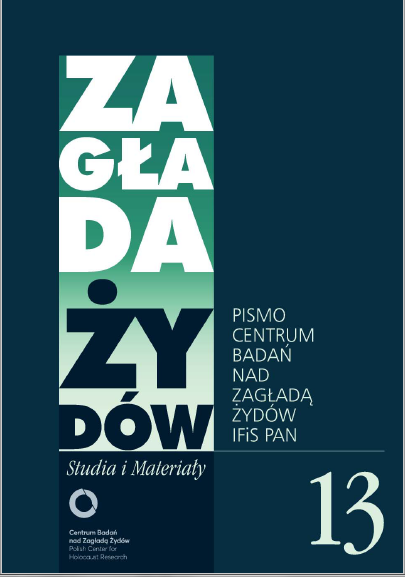Zabiegi likwidujące skutki obrzezania wykonywane w Warszawie w czasie drugiej wojny światowej. Wstępna próba opisu zjawiska
Procedures Reversing Circumcision Performed in Warsaw During World War II. An Initial Attempt at Description
Author(s): Maria CiesielskaSubject(s): Health and medicine and law, WW II and following years (1940 - 1949), History of the Holocaust, History of Antisemitism
Published by: Stowarzyszenie Centrum Badań nad Zagładą Żydów & IFiS PAN
Keywords: circumcision; foreskin reconstructive surgery; Janusz Skórski;
Summary/Abstract: Men’s circumcision is in many countries considered as a hygienic-cosmetic or aesthetic treatment. However, it still remains in close connection with religious rites (Judaism, Islam) and is still practiced all over the world. During the Second World War the visible effects of circumcision became an indisputable evidence of being a Jew and were often used especially by the so-called szmalcownicy (blackmailers). Fear of the possibility of discovering as non-Aryan prompted many Jews hiding on the so-called Aryan side of Warsaw to seek medical practitioners who would restore the condition as it was before the circumcision. The reconstruction surgery was called in surgical jargon “knife baptizing”. Almost all of the procedures were performed by Aryan doctors although four cases of hiding Jewish doctors participating in such procedures are known. Surgical technique consisted of the surgical formation of a new foreskin after tissue preparation and stretching it by manual treatment. The success of the repair operation depended on the patient’s cooperation with the doctor, the worst result was in children. The physicians described in the article and the operating technique are probably only a fragment of a broader activity, described meticulously by only one of the doctors – Dr. Janusz Skórski. This work is an attempt to describe the phenomenon based on the very scanty source material, but it seems to be the first such attempt for several decades.
Journal: Zagłada Żydów. Studia i Materiały
- Issue Year: 2017
- Issue No: 13
- Page Range: 437-446
- Page Count: 10
- Language: Polish

